I need to be able to check whether the angle between three points (A, B and C) which make up part of a shape is reflex (> PI radians), as in the diagram below (sorry for poor paint skills!):
My points should always be anti-clockwise, and I always want to measure the angle on the inside of the shape.
I am currently doing this using the following code:
//triangle[] is an array of the three points I am testing, corresponding
// to [A, B, C] on the diagram above
//Vectors from B to A and C
PointF toA = PointFVectorTools.difference(triangle[0], triangle[1]);
PointF toC = PointFVectorTools.difference(triangle[2], triangle[1]);
double angle = Math.Atan2(toB.Y, toB.X) - Math.Atan2(toA.Y, toA.X);
//Put angle in range 0 to 2 PI
if (angle < 0) angle += 2 * Math.PI;
return angle > Math.PI;
This has worked in all the cases I have tried up until now, but with these co-ords it does not work:

(Where B=(2,3) )
The angle I get back is ~-0.5, whereas I would expect ~+0.5. Any ideas why this is wrong?
UPDATE
I've attempted to implement Nico's solution, and while I understand it in theory I'm getting a real headache trying to implement it. Here is the code so far:
//Vector A -> B
float dx = triangle[1].X - triangle[0].X;
float dy = triangle[1].Y - triangle[0].Y;
//Left normal = (y, -x)
PointF leftDir = new PointF(dy, -dx);
//Vector B -> C
dx = triangle[2].X - triangle[1].X;
dy = triangle[2].Y - triangle[1].Y;
//Dot product of B->C and Left normal
float dot = dx * leftDir.X + dy * leftDir.Y;
return dot < 0;
